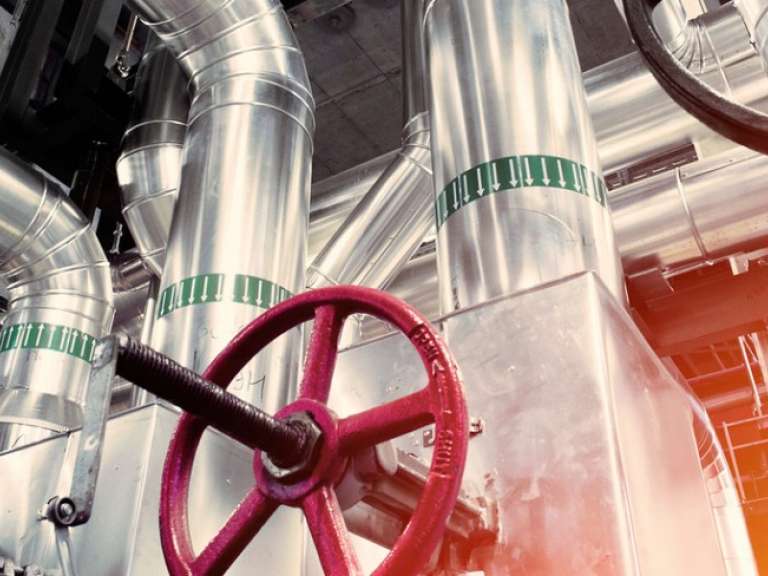Lower Power Plant O&M Costs: What Utilities Can Learn From Private Equity Operators
Jeremy BowdenFind out how private equity companies lower power plant O&M costs by running plants leaner and more profitably than incumbents.

Private equity companies have a reputation for snapping up assets and running them leaner and slicker than incumbents. Whether the assets are mature oil fields or ailing factories, they focus on the bottom line and drive down costs. The power sector is no exception. While it may be hard to find studies or conclusive data to prove that private equity firms drive down power plant O&M costs and run plants more cheaply than other companies, there is plenty of anecdotal evidence. Those involved say they bring a different culture to the business.
Risk is always at the back of any private equity investor's mind. Thus, they tend to take a balanced approach, making acquisitions of existing operating assets alongside investments in development and construction. With an eye on future value, private equity firms target assets with an advantage. This usually means newer, more efficient plants that meet current and anticipated future environmental regulations or that can react quickly to calls on supply. Once purchased, they squeeze the maximum value from an asset, often running the plant a bit leaner with fewer people than a utility.
Their focus is on getting power plant O&M costs down to ensure the best return on investment as quickly as possible, and they will quickly sell the plant when the time is right. They look at maintenance costs more closely, too, always considering how to stretch things out, which involves more risk.
Private equity takes care in assessing risk and, where possible, offsetting it. Normally, investors prefer assets with long-term contracts in order to enhance the certainty of cash flow—unless investors are positioned to offset the power price risk. This allows them to focus on mitigating both interest rate risk and commodity exposure in a way that may not be open to all companies. This approach also allows them to avoid exploration and technology risk altogether.
Private equity is prepared to accept more risk at an operational level, as well, although those risks are carefully assessed. Rather than simply upgrading or replacing equipment when required, all aspects affecting the future value of the plant are considered before investment decisions are made. If the additional value cannot be guaranteed, then upgrades are delayed until economic conditions improve, which is sometimes years later.
It is often worth taking a calculated risk in this way to drive down costs. This short-term focus can improve the immediate return on investment. Reliability will always be important, but taking such risks enables operators to squeeze every last nickel out of the system. A repair or upgrade has to be a "must have" to get funding.
Private equity firms take all variables involved in a plant's value into account when making investment decisions. Key variables are fuel type and regulation. For example, when deciding on a coal plant's future, they would account for the fact that regulation, cheap gas, and growing renewable capacity is expected to eat into the use of coal across the U.S. and Western Europe. Other variables that affect the value of the plant include subsidies, reserve margins, and demand growth.
In the United States, generators can be compensated for a variety of characteristics, including speed of start up. Not being able to start up quickly under current economic conditions will lower a plant's value, making an upgrade unprofitable. For example, a large aging gas plant in California that was designed to be turned on and run as base load has no flexibility in today's industry, which demands flexibility. This makes the gas plant difficult to use under current conditions and sharply lowers its value. Today's power industry calls for a jet ski rather than a supertanker. Even if a plant uses the right fuel, private equity values it lower if it's not designed for today's fast-paced business environment.
Above all, private equity brings a culture that constantly challenges staff, pushing them to do jobs leaner and quicker. They do this by asking questions like: Can we do without it for another six months? Utilities don't push the envelope so much.
Private equity teams aim to embrace full economic cycles and stages of a company's evolution across regulated and deregulated power sectors in order to best judge value, assess risk, and make investment decisions. One example of a private equity investor is Ares EIF, which has been targeting assets across the U.S. for nearly 30 years. It is currently attracted to commercial opportunities that arise "as the U.S. updates aging infrastructure and builds new assets to meet capacity needs over the coming decades." They also note the International Energy Administration's estimate that $2.1 trillion in new generation and transmission investments will be needed by 2035.
Firms are also attracted to opportunities overseas. Denham Capital estimates that $6.8 trillion of investment will be needed in plants in non-OECD countries over the next 20 years. These investors are even expanding into areas like Iraq and Pakistan, which once again reflects their appetite for risk—and ability to offset it.
Private equity is a major force in driving competition and innovation and in lowering power plant O&M costs. By learning from such investors, utilities can consider new ideas, improve efficiency, and help raise their bottom line, while avoiding the risks that they may not be equipped to manage.
The effectiveness of the relationship between a power plant's traders and operational staff depends on a successful internal communication strategy.
Maintaining adequate and ongoing training for staff can boost employee retention, plug the skills gap, and improve overall health and safety. Here's how.
Grooming the next generation of plant leaders means imparting not only operational expertise, but also business savvy to keep up with the changing industry.